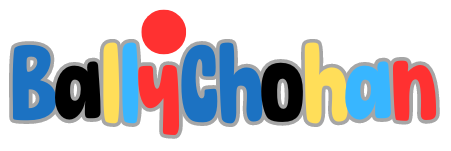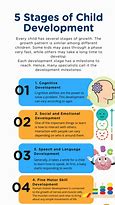What Are The Major Stages of Child Development From Birth To Adolescence?
Introduction: The Journey of Growth and Change
Child development is an incredible journey, a fascinating process of continuous growth and change that shapes us into the people we are. From the first moments of life to the cusp of adulthood, children undergo a series of transformative stages, each marked by unique physical, cognitive, and social-emotional advancements. Understanding these stages is crucial for parents, educators, and anyone who interacts with children, as it allows us to provide the appropriate support and guidance they need to thrive.
Infancy (0-2 Years): A Foundation of Development
The first two years of life are a period of rapid growth and development, laying the foundation for all future learning and development.
Physical Development: Rapid Growth and Motor Skills
Infants experience a remarkable growth spurt in their first year, gaining weight and height at an astonishing rate. This is accompanied by the development of essential motor skills. They learn to roll over, sit up, crawl, and eventually walk, acquiring a sense of their own body and its capabilities in the world.
Cognitive Development: Sensory Exploration and Language Acquisition
Infants are curious explorers, constantly taking in information through their senses. They learn to recognize faces, sounds, and objects, developing their understanding of the world around them. This sensory exploration forms the basis for language development, as they start to understand the meaning of words and babble their first sounds.
Social-Emotional Development: Attachment and Early Social Interactions
The first two years are crucial for the development of strong attachments. Infants develop secure bonds with their primary caregivers, which provides a foundation for future relationships and emotional well-being. They also begin to understand the emotions of others and interact socially, engaging in simple games and social gestures.
Early Childhood (2-6 Years): The Playful Years
The years between two and six are filled with play, imagination, and exploration.
Physical Development: Refining Motor Skills and Gross Motor Coordination
Physical development continues in early childhood, with children becoming more coordinated and capable. They refine their fine motor skills, mastering tasks like drawing, writing, and buttoning clothes. They also develop their gross motor skills, learning to run, jump, and climb.
Cognitive Development: Symbolic Play, Language Explosion, and Early Literacy
Early childhood is a time of significant cognitive growth. Children engage in symbolic play, using objects to represent other things, showcasing their burgeoning imaginations. Their language skills explode, expanding their vocabulary and understanding of grammar. This paves the way for early literacy, as they start to recognize letters, sounds, and simple words.
Social-Emotional Development: Developing Self-Awareness, Social Skills, and Emotions
Social-emotional development takes center stage in early childhood. Children become more self-aware, understanding their own feelings and recognizing those of others. They learn to share, cooperate, and follow rules, developing essential social skills. This period is also marked by the development of a wide range of emotions, including empathy, jealousy, and frustration.
Middle Childhood (6-12 Years): Expanding Horizons
The middle childhood years bring with them a new sense of independence and an eagerness to explore the world around them.
Physical Development: Continued Growth and Motor Refinement
Physical growth continues, although at a slower pace than in infancy and early childhood. Children refine their motor skills, becoming increasingly adept at sports, musical instruments, and other activities that require fine motor coordination and dexterity.
Cognitive Development: Concrete Operations, Logical Thinking, and Problem-Solving
Middle childhood is marked by the development of logical thinking skills. Children can understand concrete concepts and apply them to real-life situations, developing their problem-solving abilities. They become increasingly interested in learning about the world around them, asking questions, and engaging in critical thinking.
Social-Emotional Development: Peer Relationships, Social Norms, and Identity Formation
Peer relationships take on a new importance during middle childhood, as children spend more time with friends. They learn to navigate social norms, build friendships, and deal with conflicts. They begin to form their own sense of identity, exploring their interests and developing their values.
Adolescence (12-18 Years): Transition to Adulthood
Adolescence is a period of significant change and transition, as young people move from childhood into adulthood.
Physical Development: Puberty, Hormonal Changes, and Physical Maturation
Adolescence is marked by puberty, a complex process of hormonal changes and physical development that leads to the maturation of the body. Girls experience breast development, menstruation, and growth spurts, while boys experience voice changes, facial hair growth, and growth spurts. These changes can be both exciting and challenging, as teenagers grapple with their changing bodies and developing identities.
Cognitive Development: Formal Operations, Abstract Thinking, and Identity Exploration
Adolescents begin to think abstractly, developing the ability to grasp complex concepts, imagine possibilities, and consider different perspectives. They engage in critical thinking, exploring moral and ethical issues, and developing their own beliefs and values. This is a period of significant identity exploration, as teenagers strive to find their place in the world, define their values, and determine their goals.
Social-Emotional Development: Establishing Independence, Navigating Relationships, and Developing Values
Social-emotional development continues to be a key focus during adolescence. Teenagers seek greater independence, challenging parental authority and forging their own paths. They navigate complex relationships, learning how to communicate effectively and build healthy connections with friends and romantic partners. They also develop their own values and beliefs, often questioning societal norms and seeking to establish their own moral compass.
Conclusion: A Journey of Growth and Change
Child development is a remarkable and ever-evolving process, unfolding in stages, each with its own unique characteristics and challenges. From the rapid growth of infancy to the self-discovery of adolescence, every stage contributes to the formation of a well-rounded individual.
It is essential to remember that development is not a linear process, but rather a continuous journey of growth and change. Each child develops at their own pace, and variations are normal. By recognizing and celebrating these individual differences, we can foster a nurturing environment that allows children to thrive.
FAQs
Q: What are some common milestones in child development?
A: Milestones are age-appropriate achievements that children typically reach. These can include things like rolling over, sitting up, walking, talking, and reading.
Q: How can I support my child’s development?
A: Providing a stimulating and loving environment, engaging in interactive play, and offering opportunities for learning and exploration are all essential for supporting a child’s development.
Q: Is it normal for children to develop at different paces?
A: Yes, it’s perfectly normal for children to develop at different paces. Some children may reach certain milestones earlier than others, while others may take longer.
Q: What are some warning signs that a child may be having developmental problems?
A: If a child is consistently behind in their development or is not meeting age-appropriate milestones, it’s important to seek professional guidance from a pediatrician or child development specialist.
Q: How can I learn more about child development?
A: There are many resources available, including books, websites, and community programs that offer information and guidance on child development.
Remember: Every child is unique. By understanding the stages of child development and providing the right support, we can help them reach their full potential.

